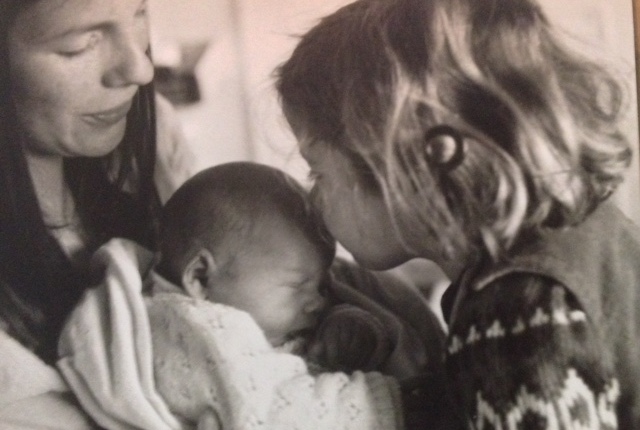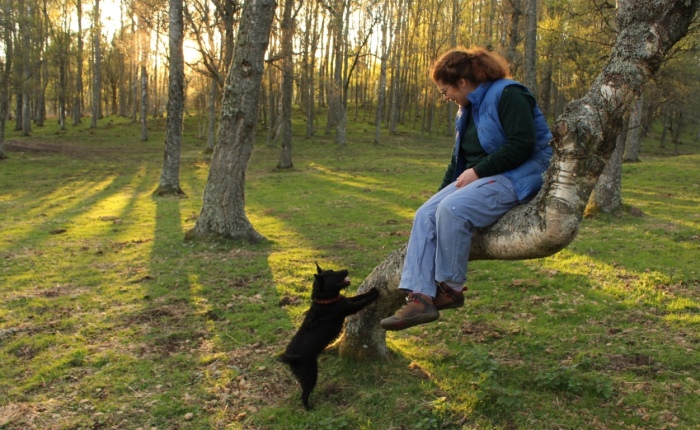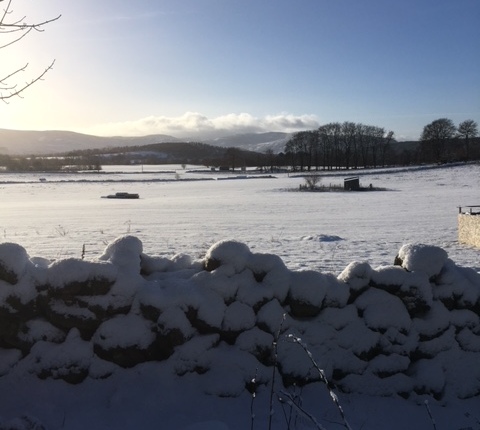With my face down in the water I hold my breath for as long as I can so I can stay in the blue misted underwater world. Not being an ultra free diver this lasts about thirty seconds, but it gives me long enough to adjust my focus and calm down so I stop twitching when objects that ‘are seaweed but could be sharks’ float into my peripheral vision. During thirty seconds of breath holding the first ten gets my adrenalin down. My survival brain reacts to sudden cold water immersion like a baby monkey fell in a river, but after that it’s time to explore the underwater pool.
From beneath the water’s surface the breaking surf looks captivating, the waves breaking through the surface above me are like a kalaidoscope, rather than looking ominous and threatening. I feel the swell of the tide’s incoming fill as it carries me further into the tidal pool, but it only lifts and carries me, and clouds my vision with dancing bubbles of silver and aquamarine.
I turn onto my back and float with my fins out of the water, resting on the incredible power of the Atlantic waves breaking over the rocky barrier behind me where this big pool lies in a rocky fissure. Wild swimming here is a way of adventuring into a place and a circumstance where you couldn’t normally survive, at least not intact for very long before the massive waves introduced you to a barnacle covered rock. It isn’t safe, or within my comfort zone, but I really want to be here. In fact I really, really want to be here, being swirled around, upside down and inside out by a natural washing machine because it is totally, captivatingly different from how you imagine it to be.
I always feel that being in a small boat or in the sea wild swimming is like riding an absolutely enormous horse. I have no choice but to surrender and be carried along by it, blending with the massive force around me, then finding another self I don’t usually use for whom the sea feels like home. I have to trust and know and activate my own physical and mental abilities so I can move myself around, but as I am always going to be seriously over matched in terms of energy I am humble. Finding which way is up in breaking surf can be a panicky situation, as the powerful forces moving you can be overwhelming. I need to be mentally quiet and trust that I can do it, I need to receive rather than project energy, and feel all of myself right to the edges, top, bottom and sides to find a place of confidence.
Before finding the pool I waited five years. Technically I knew roughly where it was but not exactly how to get to it so it became part of my personal mythology, like a white stag. It’s existence depends on the state of the tide. Too high and it becomes another part of the coastline, blended into a foamy maelstrom by huge Atlantic swells. We talked it up for a few days, then on the last day before leaving for home we just HAD to get up early and go. It was not the most inviting day for Western Isles swimming. Grey, overcast and windy, the sea looked hard and impenetrable. I sat on the edge of the pool in my wetsuit dispatching thoughts of conger eels with a mental baseball bat.
We found it under a massive fold of rock between the cliff edge world of sea pinks, short turf and sheep, and the rock pool world of limpets, little sea weeds and barnacles. We found it just in time. Forty minutes later when my wetsuit no longer protected me from the summer sea cold I climbed out and rubbed my stippled limbs dry while balancing on a huge, smooth rock slab. Holding a cup of tea between my warming hands the breakers flooded over the rock lip of the pool and the sea pool rejoined the sea entirely.
It feels such a whole life having days like these. Dried off with fins packed on the back of my rucksack, we picked field mushrooms from the multitudes of little cream caps strewn along the cliff tops. A couple of days before we fished and foraged for mussels. We walked into the interior trusting to landmarks to find a special trout loch. The island where we were is a kalaidoscope of waters – lochs, lochans and beautiful, complicated coastline. A landscape of great diversity in the microcosm and little diversity when you take a wider angle. It encourages you to find and unfold elemental hidden energies, and say “ok I will trust you”. When you walk, when you are alone in the sea, when you are foraging for mussels or seaweed, you have to let your senses trust that what you are looking for will be there. That if you stop trying so hard to look for one, a path will unfold and take you home. You have to be coherent.
On the way back from fishing, we were talking and we took a slightly different route. We knew we had to walk pass six small lochs on rough moorland to get back to the truck. In the middle of a large boggy expanse we knew we were heading in roughly the right direction but had lost our bearings. Standing and looking for landmarks, my small dog was also collecting information. Suddenly she said “it’s this way of course, you nose-blind numpties!” (she is hugely affectionate but is her own dog and is often perplexed by human limitations), and trotted off across the moor. She had never shared her tracking skills with us before, perhaps not wanting to risk that we might be interested in her private collection of vintage rabbits, but she was so absolutely determined that she was on to the truck that we trusted her, and of course she lead us in precisely the right direction.
Trust and heart coherence are the first places I go in developing that interface between two bodies that we need for really good riding, and adventuring into new realms both in our experience and in our thinking brings them into sharp focus. With that foundation, that sense that we literally and metaphorically always aim to ‘have the horse’s back’, like holding on to a small child as it looks over the edge of a high bridge, we can be coherent, we can receive a lot more of the information we need to keep ourselves and our horses safe, and we can make decisions with clarity and precision about what we need to do throughout a ride.
“Horses don’t ignore their sensate experience. As animals they gauge trust, not by words spoken, but by how they feel. Trust with others is developed over time. We can chase a wild horse in a round pen and bring it to submission in half an hour. This does not mean we have gained the horse’s trust. The horse learns to trust the human gradually, each point of contact building on the previous session. Training a reliable horse takes recurrent reinforcement that we are not dangerous, that we are competent socially and that we respect his need to be a contributing member of the team. It only takes a minute to break trust, but it can take a thousand hours to repair it”.
Ariana Strozzi (2004). Horse Sense for the Leader Within.
It’s a big responsibility. The other day myself and a good friend and two of my dogs took Lad and Oro the Youngest for his first big trail ride. He has done lots of smaller trips out, and this was a progression to a trail ride of about 1 1/2 to 2 hours on a much more varied trail round the loch. The way I visualise it is to create a small, mobile herd (this one was two horses, two dogs and two humans), where most of the members are going somewhere they know well, and just one member adventuring off his personal map. When you set it up like this, the rest of the herd is a support system. Most of the group, dogs included, had a really good mental map of the territory we’re covering, it’s backyard stuff to them. The herd also needs to be a herd, they need to live or spend regular relaxed time together, rather than be a bunch of strange horses and people.
“Relationships are based on connectedness. When people communicate, an exchange of perspectives takes place that can lead to new ways of seeing and being together for the people involved. We are capable of communicating far more than fear and insecurity to each other when our feelings become part of the legitimate scope of or awareness. Even when we are feeling threatened, angry or frightened, we have the potential to improve our relationships dramatically if we bring mindfulness into the domain of communication itself.”
Jon Kabat-Zinn (1991) Full Catastrophe Living – How to cope with stress, pain and illness using mindfulness meditation.
The adventuring horse is there to extend his mental map, but the delightful thing about horses is that as they progress they can borrow responses from other herd members when they come across new obstacles and vistas. This has two sides to it, as many riders know, but it can seriously improve learning when it goes well (and learning other stuff when everyone decides to spook at once). When you can tap into their self-organising system again they become one mind. One horse stops, the other stops too, then they move off again in synchrony. Oro adventured ahead, or trusted to the group to look after him while he went behind Lad and absorbed Lad’s reactions while he made sense of something. You see this in wild or feral herd behaviour with young horses moving ahead and scouting stuff out, then coming back when it gets a bit alarming, and its good to encourage it in young horses rather than forcing them to follow an older one or go out alone.
My job was to manage where we went, the speed we took, whether we had any stops or not (and decide whether to compromise on this point in relation to heathery snacking to prevent fatigue), and health and safety. This is not really a role that in nature one horse ever takes, they don’t work like that, but humans can learn to be good at it. It brings up the verb ‘leading’, but I think of it in practice as ‘managing’. Leadership is an attractive concept to humans, but it has all sorts of connotations and I feel its definition is too blurred for me in relation to horsemanship. In practice I want to manage the edges of the experience of the adventuring members of the herd so they can safely build confidence and get home again with good memories. It’s more like a collie might with sheep. Go here, don’t go there, let’s all go at this pace, let’s all wait here. My aim is to keep the herd flowing together, connected, calm, and safe.
We had a lovely ride sharing the adventure with Oro, a familiar ride through fresh eyes. When he had an idea, like experimenting with trotting up a steep bank as a way to tackle it, if it felt calm and purposeful I went along too. I trusted my feel for how he was expressing himself with normal calmness, and if he felt a little scared and had to pause for something I didn’t wait or put pressure on him, but hopped off and we progressed close together on foot until calm again. If I had to do something else with other herd members, like rescuing the dogs when they were stuck in someone’s garden, I did it on foot but took him with me. Then we picked up the ‘looking for a getting on object’ activity, one of his faves, hopped back on and rode along pricky ear adventuring again.
Over the course of the ride this meant very little fear stopping even for the two narrow footbridges we needed to cross. I got on from about six different objects, which he knows how to do well and seems to enjoy. Getting this consistent makes it very easy for me to mount calmly and with his help, from funny objects like fallen trees and tumbledown walls. For me the foundation job in riding is going along calmly, developing trust in each other and the activity, rather than being subject to a series of fearful bumps, stresses and separations. It is important to keep the flow going by giving yourself the instruction to get off and walk when your horse needs support, and only remount when you have re-established calmness. If the horse is not calm for mounting, it isn’t calm for riding!
And we all got home and lived happily ever after.
Live adventurously.




